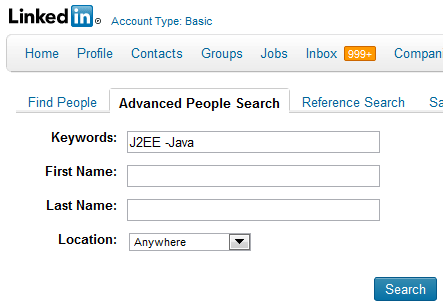|
Categories
- Achiever (1)
- ads (1)
- analytics (1)
- boolean (1)
- Boolean Black Belt archives (1)
- Boolean help Tool (1)
- Boolean Search (1)
- Born Leader HR (1)
- CRM (1)
- demand (1)
- Dictionary (1)
- distribution (1)
- executive (1)
- Facebook Fan Sourcing (2)
- for (1)
- growth (1)
- headhunter (1)
- hiring (1)
- Hiring Tips (1)
- HR POWER (1)
- igoogle (1)
- India Recruiting (1)
- international Recruiting (1)
- interview (1)
- interviewing (1)
- job (2)
- job boards (1)
- linkedin (3)
- marketing (1)
- Metrics (2)
- Network (1)
- professional (1)
- recruiter (1)
- recruiters (1)
- recruiting (2)
- recruitment (1)
- Recruitment Dictionary (2)
- Recruitment Metrics (1)
- search (3)
- search engines (2)
- semantic search (1)
- semantic web (1)
- social networking (2)
- social recruiting (3)
- sourcing (4)
- Startup (1)
- Talent (1)
- Tips for recruitment (1)
- twitter (1)
Blog Archive
-
▼
2011
(35)
-
▼
June
(26)
- India Start up Achiever
- MANDEEP MAITRA Country Head - HR HDFC Bank Ltd.
- AQUIL BUSRAI ED - HR IBM India Ltd.
- Undiscovered Profile Linkedin
- Linkedin Challenges for Recruiters
- Twitter Tools Worth Exploring
- Seven Important Linkedin Changes !
- How to find hidden person name in linkedin?
- Social Networking in Recruitment??
- Recruiter / HR
- Job-Seekers: Can you Generate and leverage a relat...
- Report for Hiring Demand for Recruiters Continues ...
- Love Recruitment
- Future of Search
- Missed Opportunities in Recruiting
- Ways to Improve Interview
- Recruting Tool Tips
- Recruiting Metrics
- Sourcing in India
- Free Cvs - So What ?
- Facebook Fan Sourcing
- Boolean Help for Recruiters
- Boolean Search Tools
- 4 Traits That Separate a Great Recruiter From a Go...
- Sales pitch of a Recruiter
- Avoid the COLD in your CALLING
-
▼
June
(26)

A Born Leader MANDEEP MAITRA Country Head - HR HDFC Bank Ltd. Mandeep Maitra comes with over 19 years of experience. She has done her Bachelors in Psychology Honours from Lady Sriram College, Delhi University & Masters in Personnel Management & Industrial Relations from Tata Institute of Social Sciences, Mumbai. She started her career with Eicher Tractors at Parwanoo where she played a lead role in Eicher's modernisation programme. She then moved to ANZ Grindlays Bank where she was first responsible for the Investment Banking segment and then moved on to head the HR Function for Retail Banking on a Pan India basis. Besides handling complete breath of HR Functions, she managed critical people issues during tough times like the scam in 1992. This was followed by a three-year stint at Arthur Andersen at a Senior Management level. The job entailed being part of a core team which looked into strategic HR initiatives and Best People Practices across Europe, Middle East & Asia. In 1999, she moved to Timesbank as Head HR. Eight months after joining Timesbank the merger with HDFC Bank got announced. She was appointed as Head–Human Resources for the merged entity. In her words, handling the “People & Culture” issues related to the merger successfully was a real professional ‘high’. As Country Head–Human Resources at HDFC Bank, which has received numerous International and National Awards since 2000, Mandeep is the only woman to have broken the glass ceiling in the Bank and reached this level. She is known to be the architect of the HR function in HDFC Bank. As part of the Senior Management team, she has steered HDFC Bank in the list of Top 10 companies of “The Best Companies to Work for in India” (rated by BT Mercer Survey 2005) in just five years. In the last six years the Bank has grown from less than 2000 people to over 33000 employees spread over 753 branches in over 330 cites.
Labels: Born Leader HR

Its all got to do with people AQUIL BUSRAI ED - HR IBM India Ltd. “Thirty six years is the time Aquil Busrai has spent in Human Resources, working with blue chip companies like Unilever, Motorola, Shell and IBM, and he's someone who can say been there done that to most HR situations” said Economic Times describing Mr Busrai recently. And rightly so, considering his professional profile. Aquil Busrai graduated in Commerce with a Distinction. He obtained his MBA from Xavier Labour Relations Institute where he was awarded the J M Kumarappa Gold Medal for ranking First. He later passed LL. B and an Advanced Diploma in Training and Development. A University rank holder, he was awarded the Bharucha Gold Medal for academic excellence. He is currently pursuing two Ph D degrees. Mr Busrai has had 36 years' experience in Industry. He has worked in various HR roles with Unilever in India and Kenya and was Executive Director HR for Motorola operations in South Asia and its Software Groups operations in Asia Pacific. He joined Shell Malaysia in 2002 as Director Human Resources, Shell Malaysia and Managing Director of Shell People Services Asia Sdn Bhd. He returned to India from Kuala Lumpur in 2006 and joined IBM India Limited as Executive Director Human Resources. Mr Busrai has been actively associated with Management movement in India having been the President of Delhi Management Association; Vice Chairman for All India Management Association's Northern Region and Northern Region President for National HRD Network. He is on the advisory Board of several education institutes and industry forums like CII. At the November 2006 Convention of National HRD Network, he was awarded the “Pathfinder Award” for being selected as “Outstanding Seasoned HR Professional”. He is a Fellow of All India Management Association and President of National HRD Network. Mr Busrai is a keen student of non-verbal communication and is authoring a book on 'Body Language'. He is an ardent wild life enthusiast and a serious wild life photographer.
Labels: HR POWER
Sourcing has a fundamental problem: All searches return results. Yes, that is actually a problem. Why? Because everyone’s a winner. Type in a few keywords and BAM! – you get some good looking results. Hey, this sourcing stuff isn’t so hard! If I’ve said it once, I’ve said it a thousand times – sourcing is easy. In fact, it’s ridiculously easy to find some people. So if you and your company are happy with finding some people and not necessarily the best people available to be found, then you can stop reading now and go back to finding some people. For everyone who’s still reading this, try answering these questions: Sourcing is easy, but it’s not easy to get to the point where you are sure you have found all of the best available results, nor is it easy to specifically target and find people others cannot and do not. Most people use relatively basic, straight forward/direct keyword and title searches. There’s nothing wrong with that – they clearly “work” – anyone running those kinds of searches will find results. However, they will also find exactly what everyone else finds when searching for the same types of people, which yields zero competitive advantage. The fact that all searches produce results is a problem because it lulls people into thinking that sourcing is easy, and at least on the subconscious level – it leads people to believe that the results that are returned from searches represent all available matching and relevant results. However, it is a fact that no single search can find all of the people you’re looking for, and there are many social media profiles and resumes that are never found. Let me introduce you to the concept of Dark Matter. People who use relatively straight forward/direct keyword and title searches find the same people as everyone else using the same keywords and titles. What’s particularly interesting to me is the fact that everyone running basic, straight forward/direct keyword and title searches also fail to find the people who are there to be found, but cannot be found via straight forward, direct searches. These profiles are what can be referred to as “dark matter” – which, in layman’s terms, is stuff that’s there, but you can’t see it and it isn’t directly detectable. I’ve found that people have an especially difficult time understanding that every search they run both includes some of the right people, and excludes some of the right people. My last LinkedIn sourcing challenge provides a good example of that. Many respondents could find matching results, but did not seem to grasp the concept of ensuring that their searches did not exclude viable, available results. To some degree, that’s understandable, because it’s difficult to be aware of what you cannot see. However, just because your searches didn’t return a result, it doesn’t mean they are not there to be found. So what happens to the people that are excluded from your searches – the people your searches don’t return, the people you’re not even aware of? Well, it should be obvious that very few people find them, and those that do typically do so by mistake and not through a direct effort to uncover them. They are there for the finding if you can: I’m going to use a few very basic examples in an attempt to clearly illustrate what I’m talking about with regard to profiles on LinkedIn that most people #1 aren’t even aware of, and #2 cannot be found via conventional search approaches. For these examples, it is very important that you don’t get caught up on the actual search terms I use – the terms themselves are irrelevant. What is relevant is the concept behind what’s being demonstrated. It’s up to you to absorb the concept and apply it to whatever types of people you are trying to find. Let’s say you’re looking for a software engineer and your manager is very clear that she needs someone with strong Java/J2EE skills and experience. Most people searching for software engineers with Java will search for “Java.” As obvious and innocent as that would seem, doing so creates dark matter profiles. Click the image below to reveal nearly 40,000 people that cannot be found by searching with the term “Java:” For those of you who do I.T. sourcing and recruiting, you will quickly identify that the vast majority of the people returned by the above search to be software engineers who quite obviously have Java experience, yet they do not mention “Java” – their primary development language – anywhere on their LinkedIn profile. Why would a Java developer not explicitly mention “Java” on their LinkedIn profile? I know why – do you? Let’s say you’re looking for accountants, and your manager tells you that they must be CPA’s. Of course, you can find people by searching for all of the various ways someone can express being a CPA – (CPA OR “Certified Public Accountant”). You might even get crafty, realizing that LinkedIn sees “C.P.A.” as distinctly different than CPA and add that to the OR statement. There are nearly 5,000 people in all of LinkedIn that cannot be found unless you specifically search for “C.P.A.” – here’s the proof. However, searching for any variant of CPA is still a very basic and direct method of searching for people who are CPAs. Click the image below to see over 10,000 people who are highly likely (I’d say > 90%) to be CPA’s, but cannot be found by searching directly for any mention of CPA: After getting over 600,000 profiles returned from my initial search targeting a current or past title of “Accountant” and specifically excluding any mention of CPA, I filtered the results by people who specify that they currently work for either Deloitte, PwC, KPMG or Ernst & Young. Do you think a “senior accountant” at PwC isn’t a CPA? Those results represent more than 10,000 accounting professionals who work for Deloitte, PwC, KPMG or Ernst & Young that simply do not exist to anyone searching for (CPA or “C.P.A.” OR “Certified Public Accountant”). Why would a CPA not make explicit mention of it on their LinkedIn profile? I know why – do you? The darkest dark matter profiles on LinkedIn are those of people who use very few, if any words that give you any real clue as to their specific skillset or experience. These profiles are often never found, because any obvious keyword will prevent them from being returned in search results. To reveal and target these profiles, you have to exclude the more obvious keywords that most people who actually use. For example, if I were looking for software engineers, but did not want to see the profiles that everyone else is finding, I could target a current title of (“software engineer” OR developer OR programmer) and try to exclude most major technologies with -(“java/j2ee” OR peoplesoft OR perl OR oracle OR SAP OR java OR j2EE OR .Net OR C# OR C++) in the keyword search field. There are almost 1,000,000 profiles returned by that search, check them out here. There’s nearly 13,000 of them from IBM, 12,000 from Accenture, and over 4,000 from Google. Any sourcer or recruiter who puts Java, PeopleSoft, Perl, Oracle, SAP, J2EE, .Net, C#, or C++ in their search is simply not aware that the nearly 1,000,000 people I just found with the above search even exist because they will be excluded from their search results. Why would you want to look at profiles of software engineers who don’t mention any particular technology on their LinkedIn profile? I know why – do you? One way of discovering Dark Matter profiles is to conduct a form of Talent Mining I refer to as Indirect Search. There are many applications of Indirect Search methodology, including the 2 examples I shared above, and you can also see some in action among many of the proposed solutions to my Ruby LinkedIn Sourcing Challenge. The challenge really was an example of Dark Matter profiles on LinkedIn – I asked readers to find people on LinkedIn who had Ruby on Rails experience, but did not mention any variant of Ruby on their LinkedIn profile. Many people who solved the challenge had to go indirectly search for LinkedIn profiles by first going outside of LinkedIn to find information on people that alluded to Ruby experience, and then cross reference the name on LinkedIn to see if the person’s profile did or did not mention Ruby. While that is one form of Indirect Search – finding people on LinkedIn with specific experience by finding them first elsewhere – how could you find people with Ruby experience on LinkedIn who do not make any explicit mention of it on their LinkedIn profile, AND they don’t have any other info elsewhere on the Internet to give you easy clues indicating that they have Ruby experience? No. While some people feel semantic search solves all sourcing problems (vendors, mostly Even the most advanced NLP algorithms are limited to “analyzing” and “learning” from text. What happens if the text isn’t there to analyze and learn from in the first place? While there are solutions that are going to become available that claim to use semantic search that can cross reference LinkedIn profiles with other social media profiles and help identify people who may reveal some information via Twitter or other networks that they do not on LinkedIn – that too only works with information that is directly retrievable. As you can see even from the extremely simple examples I demonstrated above, it is actually necessary tothink and purposefully construct indirect searches for implied experience or qualifications in order to reveal Dark Matter profiles – those that cannot be seen/found by direct searching methods. It’s also interesting to note that more powerful forms of Indirect Search require the strategic exclusion of direct search terms – something I am not aware that any semantic search application allows. Does anyone know of one? Before I get flamed by the semantic search vendors and fanboys/girls – I’m passionate about semantic search, and I’ve actually used most of the “big name” solutions on the market. I also perform semantic search manually at the most powerful level (sentence level verb/noun combos) to help fill job openings just about every day – ask me how if you’re interested. Because I really understand and appreciate information retrieval – both manual and automated – I feel it’s my duty to keep vendors who are selling semantic search as the solution to all sourcing/recruiting challenges honest and to inform people who may be considering purchasing solutions that there are limitations of semantic search. I’ll be writing more on the subject very soon, but I’d like to illustrate another issue with “semantic search” solutions that vendors won’t volunteer: If 5 companies who are constantly battling it out for top talent all use the same semantic search application, all 5 companies will find all of the same people. That means no competitive advantage. Perhaps even more importantly, they’ll also be totally unaware of the people their semantic search solution could not find – a common hidden talent pool of Dark Matter profiles that cannot be tapped by any of the companies. Dark Matter profiles don’t magically appear for people who pay top dollar for a LinkedIn Recruiter account. However, one powerful feature of LinkedIn Recruiter that can put a small dent into the Dark Matter of LinkedIn is the “All Groups” search, which allows you to target people in any group even if you are not a member. At least one person who solved my Ruby LinkedIn Sourcing Challenge did so by using this feature. However, there is a Yang for every Yin – it won’t work for the large number of people who haven’t joined groups, or haven’t joined a group that you can use to reliably identify them. Regardless of level of account, no one searching LinkedIn, in any way or method, is immune to the Dark Matter phenomenon – it is a fundamental challenge to human capital information retrieval. Quite simply, you can’t directly search for and retrieve information that isn’t there to be retrieved. There are many great people that can only be found via Indirect Search methods. To be sure, the Dark Matter concept certainly isn’t limited to LinkedIn – it applies to every source of human capital data, including your ATS/CRM, Monster’s resume database, the Internet, etc. What percent of LinkedIn do you think can be classified as Dark Matter – profiles that are there, but are never found or viewed through direct search methods?The Dark Matter of Human Capital Data
Revealing LinkedIn’s Dark Matter Profiles
LinkedIn Dark Matter Example #1
LinkedIn Dark Matter Example #2
![]()
Darkest Matter
Indirect Search
Can Semantic Search Help?
![]() ), semantic search isn’t the solution to the Dark Matter challenge, for a number of reasons – not the least of which is that semantic clustering and other applications of machine learning can only work (semi)reliably with what is actually there/mentioned.
), semantic search isn’t the solution to the Dark Matter challenge, for a number of reasons – not the least of which is that semantic clustering and other applications of machine learning can only work (semi)reliably with what is actually there/mentioned.Dark Matter Doesn’t Discriminate
LinkedIn Dark Matter Question for You
Labels: linkedin, social recruiting
If you and/or your team are up for a test of your fluid reasoning and sourcing capability, try solving this challenge: There is no single correct answer – there are many different approaches to solving this challenge. I’m going to recognize Jeremy Langhans once again for being able to solve that challenge in about 15 minutes before I even finished my presentation, using only his iPhone. To this date, no one else has even tried to take a crack at it. The gauntlet has been thrown down. I hope at least a few people are up to the challenge! People who will develop into the best sourcers will definitely be those with fluid reasoning capability. The ability to solve problems in novel situations – those a person has never previously been exposed to and not resembling something formerly known or used – is essential to a world-class sourcer. In contrast, crystallized intelligence is the “ability to use acquired skills, knowledge, and experience.” People with strong crystallized intelligence are able to repeat what others have shown them, but have a difficult time with scenarios they haven’t previously encountered and with thinking outside of the box when their standard approach doesn’t yield the enough (or any!) relevant results or leads. The great thing about challenges like this one is that they don’t focus on someone’s ability to repeat something that someone else showed them. Instead, they verify a person’s ability to think creatively and solve a problem and give you insight into their abilities – far beyond being able to answer a multiple choice or fill-in-the-blank question. In many ways, exercises like this are no different than those used by software engineering companies who ask developers to write code on a whiteboard or on a computer during an interview to solve a problem or accomplish something specific. Doing so can clearly demonstrate to a hiring manager or team lead how a person thinks, and how they go about solving a novel problem. In other words, this kind of exercise evaluates a person’s critical thinking ability. Which is, you guessed it – critical. This is an excellent opportunity to show the world what you and/or your team can do. For those who might be afraid to even try – please don’t be intimidated by the sourcing challenge. There is no single answer, so you can’t get it “wrong” unless your approach doesn’t clearly show how you know for certain that the person whose LinkedIn profile makes no mention of any variation of Ruby on Rails actually has Ruby on Rails experience. Provided enough people share their solutions, the global sourcing community will benefit from seeing how many different ways such a problem can be solved. I’m glad you asked. Other than applying some game theory by offering thousands of sourcers and recruiters around the world with the ability to take a crack at an interesting sourcing challenge and build upon the approaches of others (isn’t that point enough?!?!), I will be writing a post in the near future to demonstrate exactly why it is very importantfor you to be able to find people with skills and experience they don’t mention – especially on LinkedIn. There will be more challenges in the future – stay tuned!The LinkedIn Sourcing Challenge
Do You Have Strong Fluid Reasoning?
Bragging Rights and Benefits
What’s the Point?
Labels: linkedin
Are you looking for new apps to enhance yourTwitter experience? Twitter has turned into a major real-time news source and is no longer a procrastination tool. In order for us to filter and manage the ever-dynamic Twitter, a number of new apps have emerged. This article will cover five new tools to help make it easier for you to reach your social media goals and help you keep up with the “latest” on Twitter. Facebook lets you hide annoying posts, so why not Twitter? It turns out there’s an app called Proxlet that does this and more. And it works with your favorite clients like Twitter (via Chrome extension), TweetDeck desktop, Twitter for iPhone and others. You can block spammy apps, temporarily mute loud users, filter out annoying hashtags, and breathe a little easier. Erase annoying tweets from your timeline. Nurph gives you Twitter chat rooms, so you can stop fighting the 140-character limit and get a room! Simply tweet a link to bring your friends and followers together for a real-time chat without taking over your followers’ timelines with long conversations. Nurph chat rooms come complete with Twitter profile integration, tweet streaming and hovercards—so you’re looking at a highly optimized, Twitter-specific chat service. Nurph is one of those things you just have to try! Take your Twitter conversations to the next level. Dlvr.it is your smart online mailman that delivers your content to various platforms and also tells you how many people enjoyed reading it. So when you publish news on your blog(s), it’s delivered to all relevant places on the web. This means your Twitter account, your Facebook profile or wherever you want it to be. And on top of that, Dlvr.it also tells you how many clicks your published content received. That might come in handy for your social media efforts as well. Deliver your content to all of your favorite social networks. After putting some new tools in place to create content, now is the time to make sense of it all and get a bigger picture of your impact. This is where Twoolr comes in and provides you with all of the data you need to analyze your Twitter efforts. Twoolr provides you with those metrics that matter most, giving you interesting visualizations such as usage trends, associated clouds and user comparisons. You access it all intuitively from the dashboard and are even able to receive growth and community reports straight to your inbox. It’s simple and presented in a slick design. All the metrics you need to track your impact on Twitter. Finally, if you feel you’re already a master of the Twitter game and want to build on that, here’s one more great tool I came across recently. It’s called Triberr and it allows you to create a tight network of fellow bloggers, sharing your posts and exchanging ideas. It’s an invite-only network, where you can create “tribes” with other bloggers. Once you’re part of a tribe, you instantly share each other’s posts via Twitter, multiplying your reach and retweets instantly. The fact that it’s invite-only and no more than 7 members per tribe guarantee that it remains high-quality and spam-free. You can think of it as a human Twitter feed with tight quality control. Extend your Twitter reach in an exclusive "bloggers only" network. I hope you’re now prepared to stay on top. Let us know which tools you u#1: Get rid of the noise

#2: Deepen your relationships
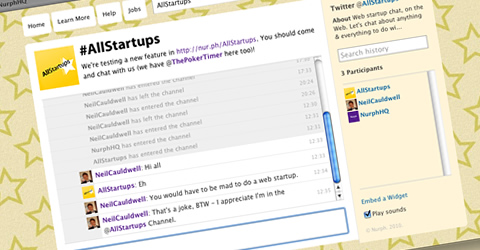
#3: Share and track your blog content
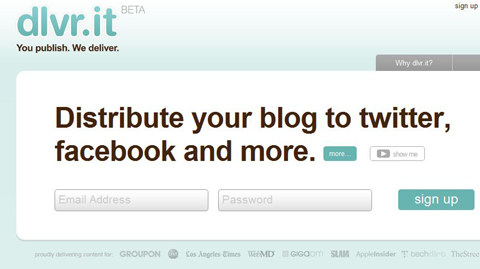
#4: Making sense of it all with awesome stats and metrics
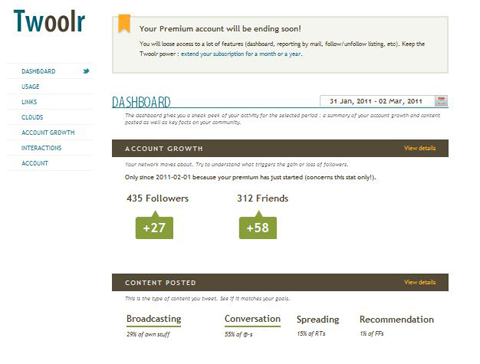
#5: Already a Twitter pro? It’s time to extend your reach
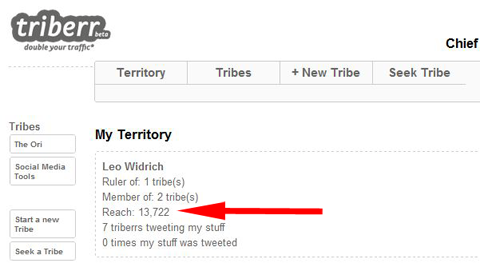
Labels: social networking, twitter


